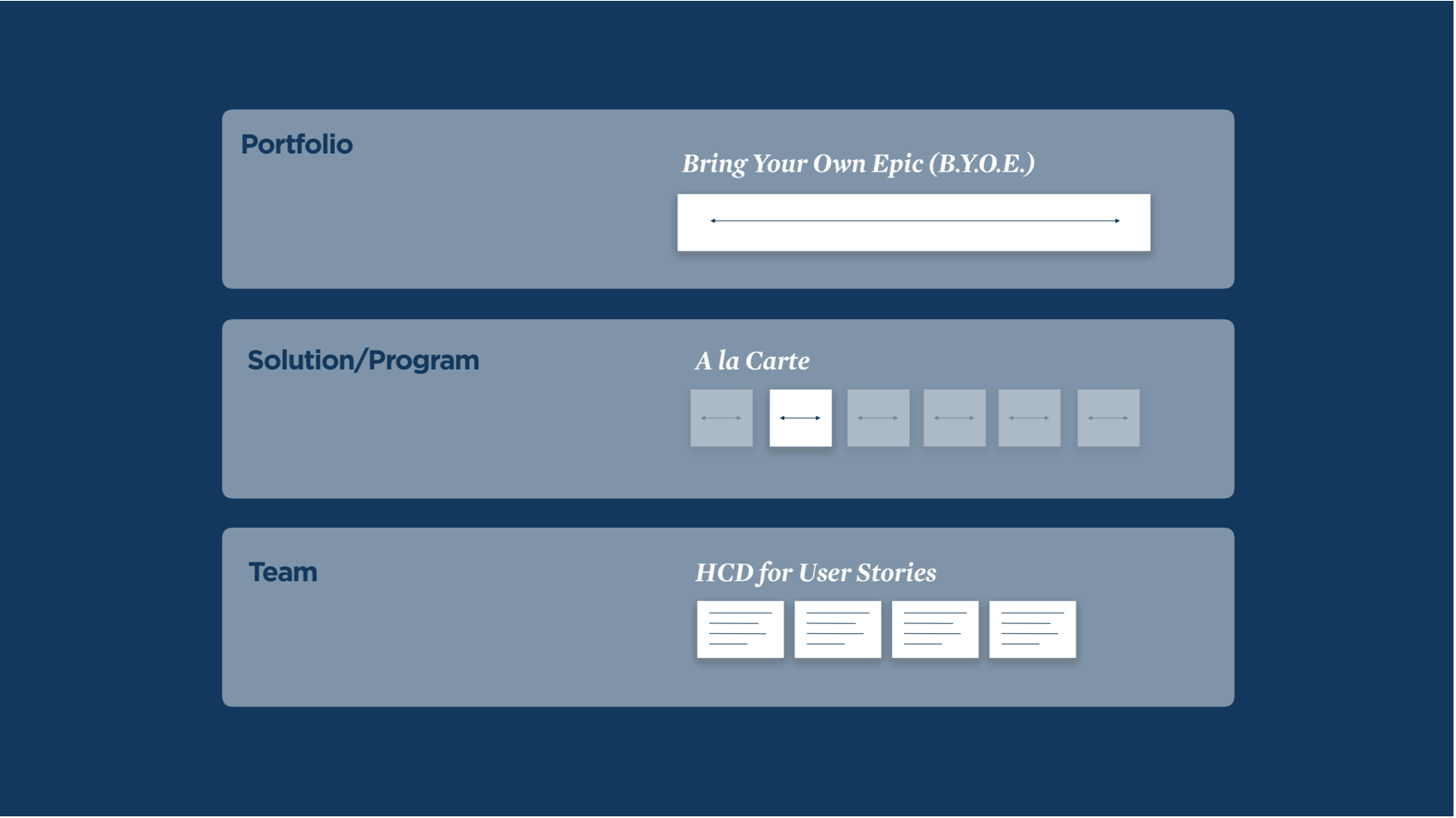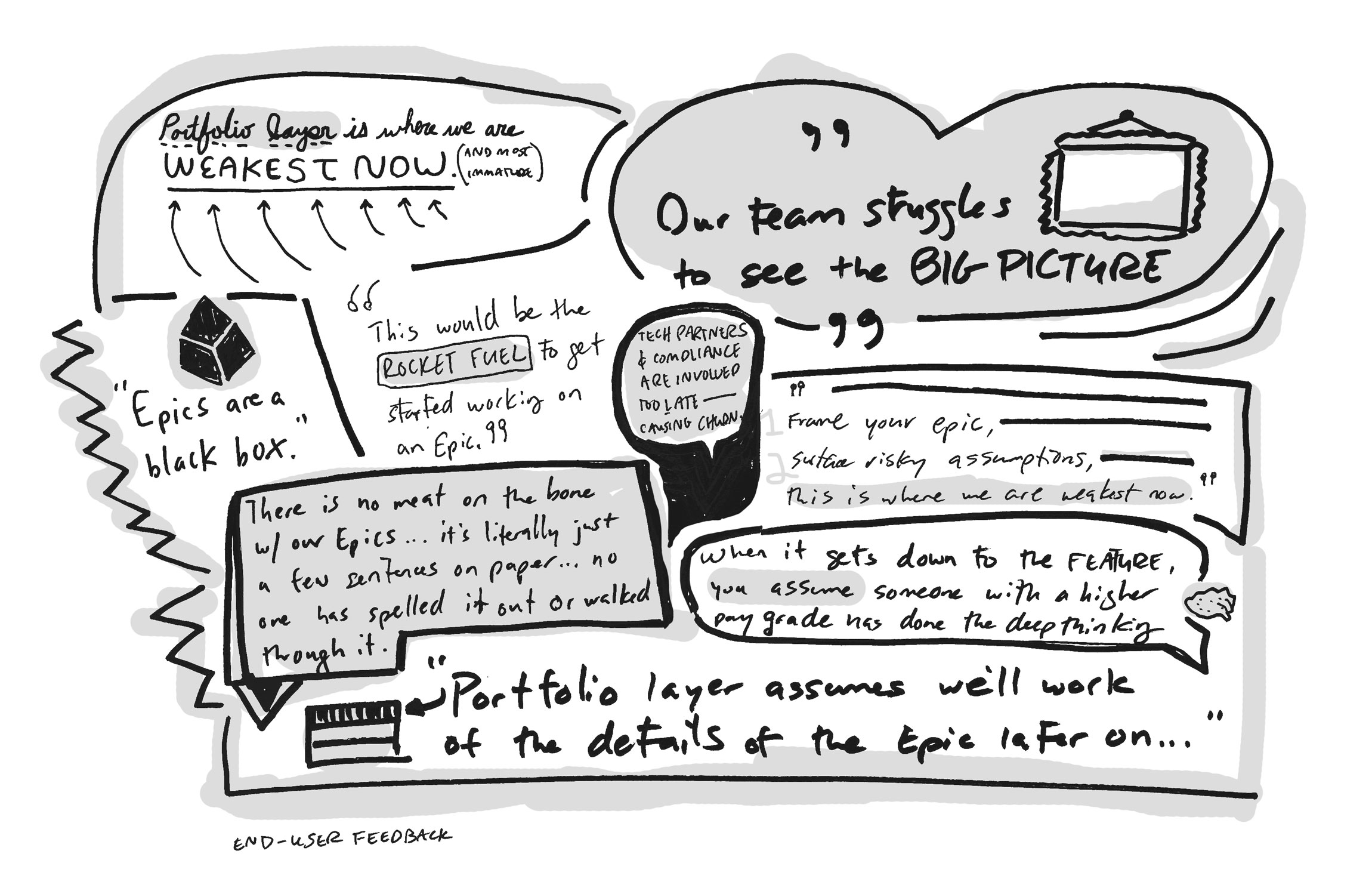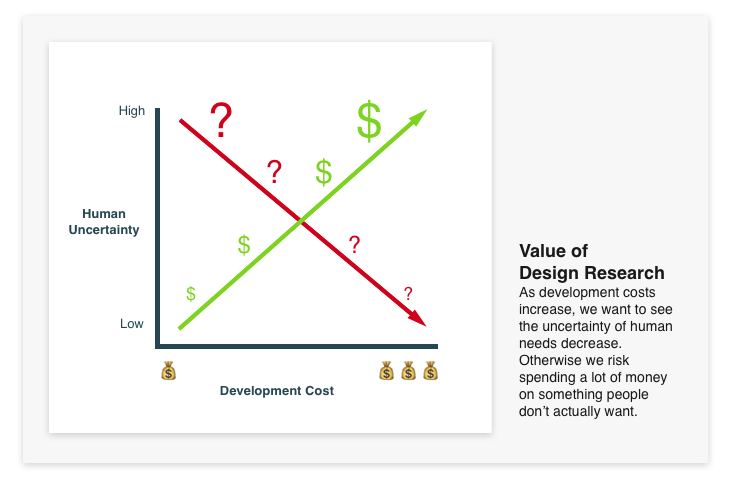USAA’s d:school
To speed USAA’s digital transformation, the Chief Design Office began a mission to get 30,000 employees to think, act and collaborate like designers through human-centered design — of which Bring Your Own Epic (BYOE) is a cornerstone program.
*BYOE is not associated with the d:school at Stanford
WHAT DOES BYOE LOOK LIKE:
![]()
![]()
![]()
![]()
Bring your work, your team and learn design thinking within the context of USAA.
![In-Person]()
![Virtual]()




Bring your work, your team and learn design thinking within the context of USAA.
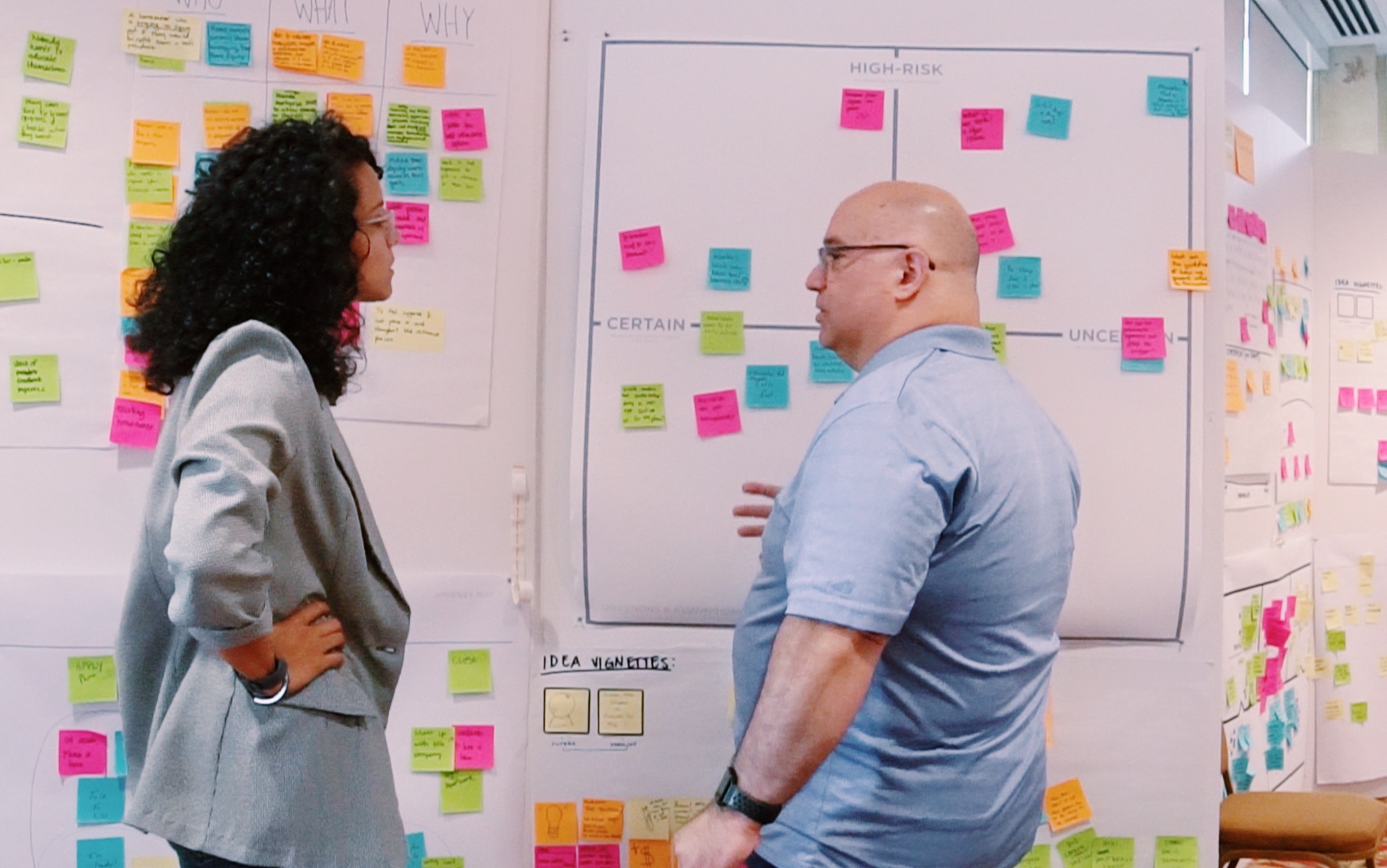

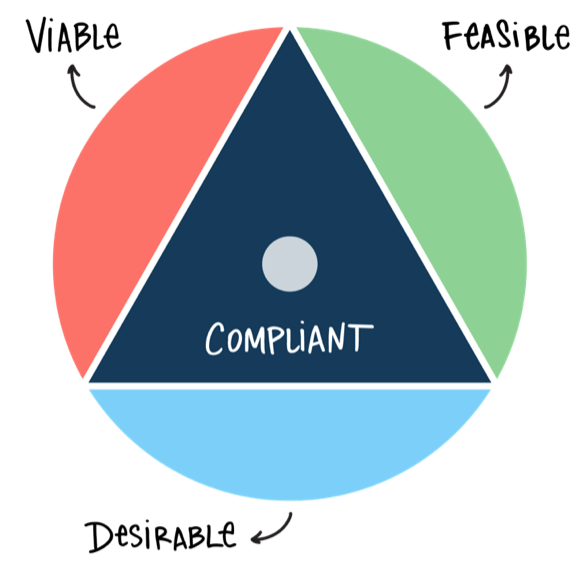
Cross-disciplinary teams defining what is desirable for members, viable for business, feasible to build and compliant within regulations.
d:school was part of a broader set of HCD offerings

WHY DID USAA NEED A BYOE?
Design Thinking is an industry-standard way to develop products & services. Design S&P says 215% increase in revenue for design led companies. This way of working is common at digitally-native companies ... how do you change the way 30,000 people work at a legacy company?
CHALLENGES WE ENCOUNTERED:
WICKED PROBLEM TO SOLVE:
How might we ... change the culture of collaboration with 150+ product teams at USAA?
IMPACT:
OPERATIONAL SAVINGS:
![]()
BEHAVIORAL INDICATORS:
QUALITATIVE INDICATORS:
Design Thinking is an industry-standard way to develop products & services. Design S&P says 215% increase in revenue for design led companies. This way of working is common at digitally-native companies ... how do you change the way 30,000 people work at a legacy company?
CHALLENGES WE ENCOUNTERED:
- Company not getting ROI of design operating at the scrum layer
- Confusion on how Scaled Agile & HCD work together
- Poor cross-disciplinary teaming
- Product Management not accomplished by one job role
WICKED PROBLEM TO SOLVE:
How might we ... change the culture of collaboration with 150+ product teams at USAA?
IMPACT:
OPERATIONAL SAVINGS:
-
The program I led created an ~$4.4M in savings for USAA.

BEHAVIORAL INDICATORS:
- 500+ individuals completed the program
- 8 Epics were shipped to market
- 9.1s Net Promoter Score
QUALITATIVE INDICATORS:
- 5,000+ employees annual goals focused on cross-functional teaming
- Program operates today without my involvement (as of ‘22)
MY PROCESS:
Discovery ︎ Ideation ︎ Evaluative Research ︎ Prototype ︎ Implementation
🔭 Discovery
Having conducted qualitative research (Bermuda Triangle of Product Teams) our team had a solid foundation of human insights.
Key findings we surfaced:
- stop educating 1-role
- design teams make the difference in HCD adoption
- the customer is no where in SAFe 🙅🏼♂️
- design needed to improve its strategic partner role
Methods:
• generative research
• desk research
• how might we ...
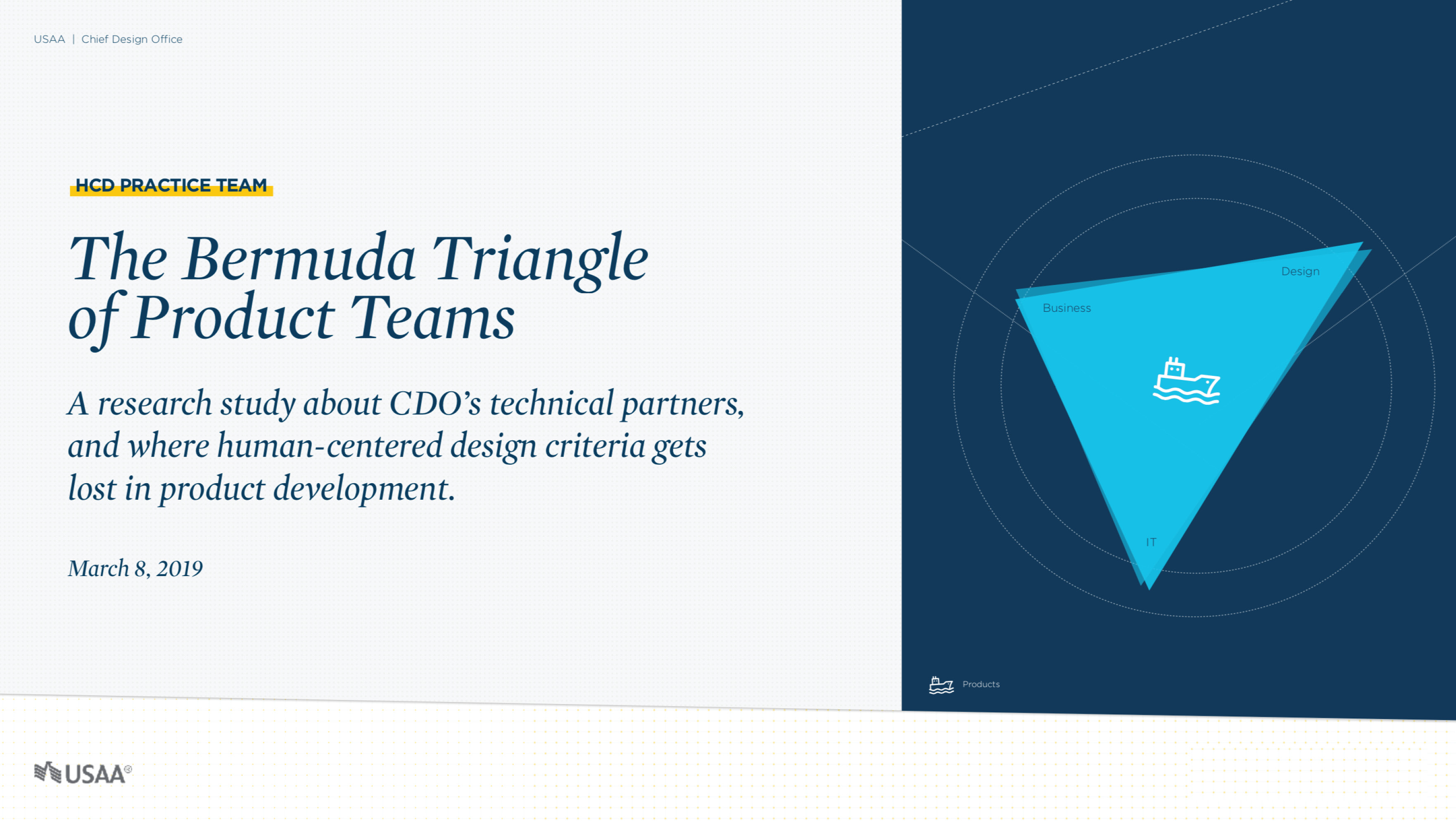
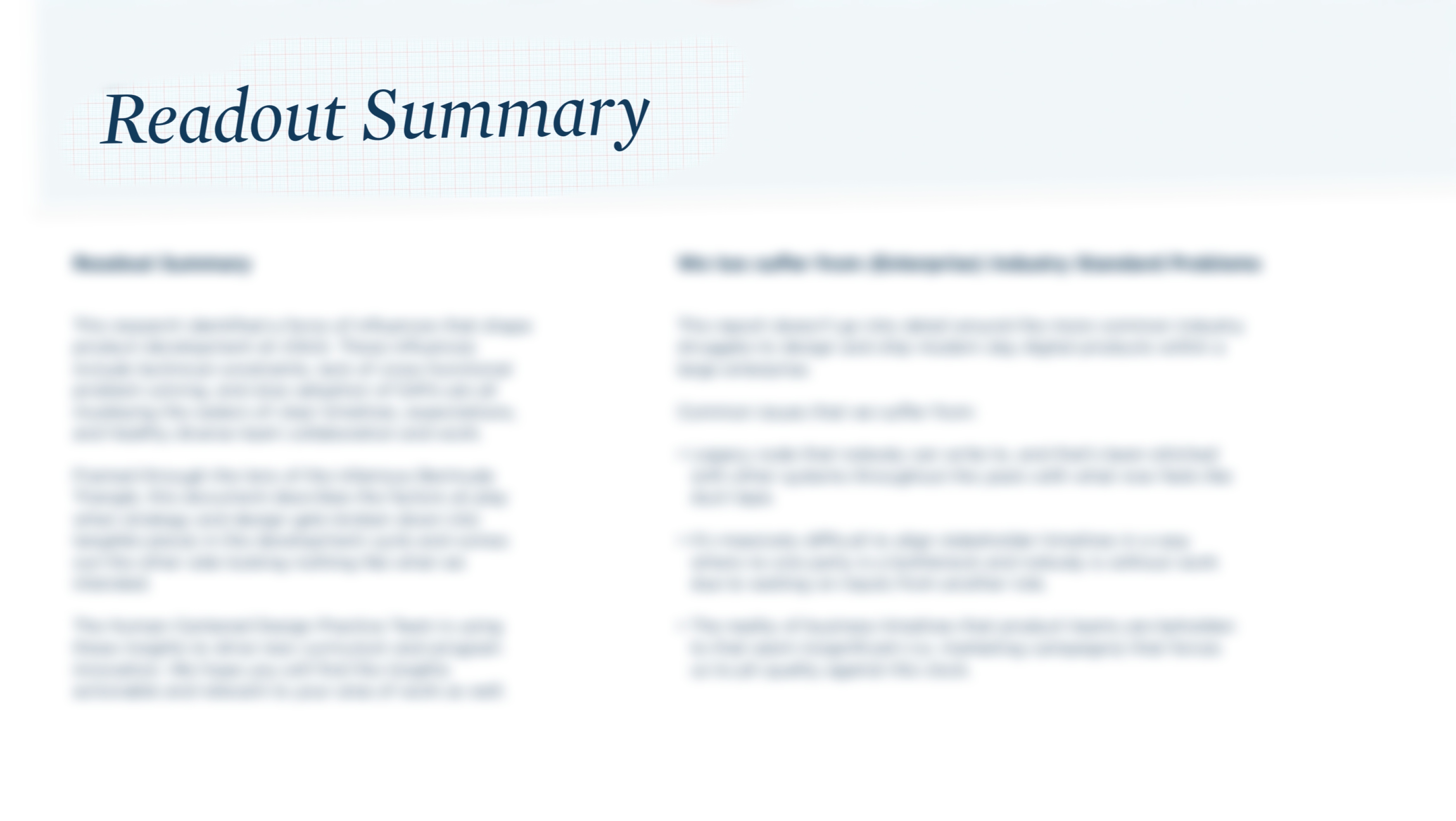



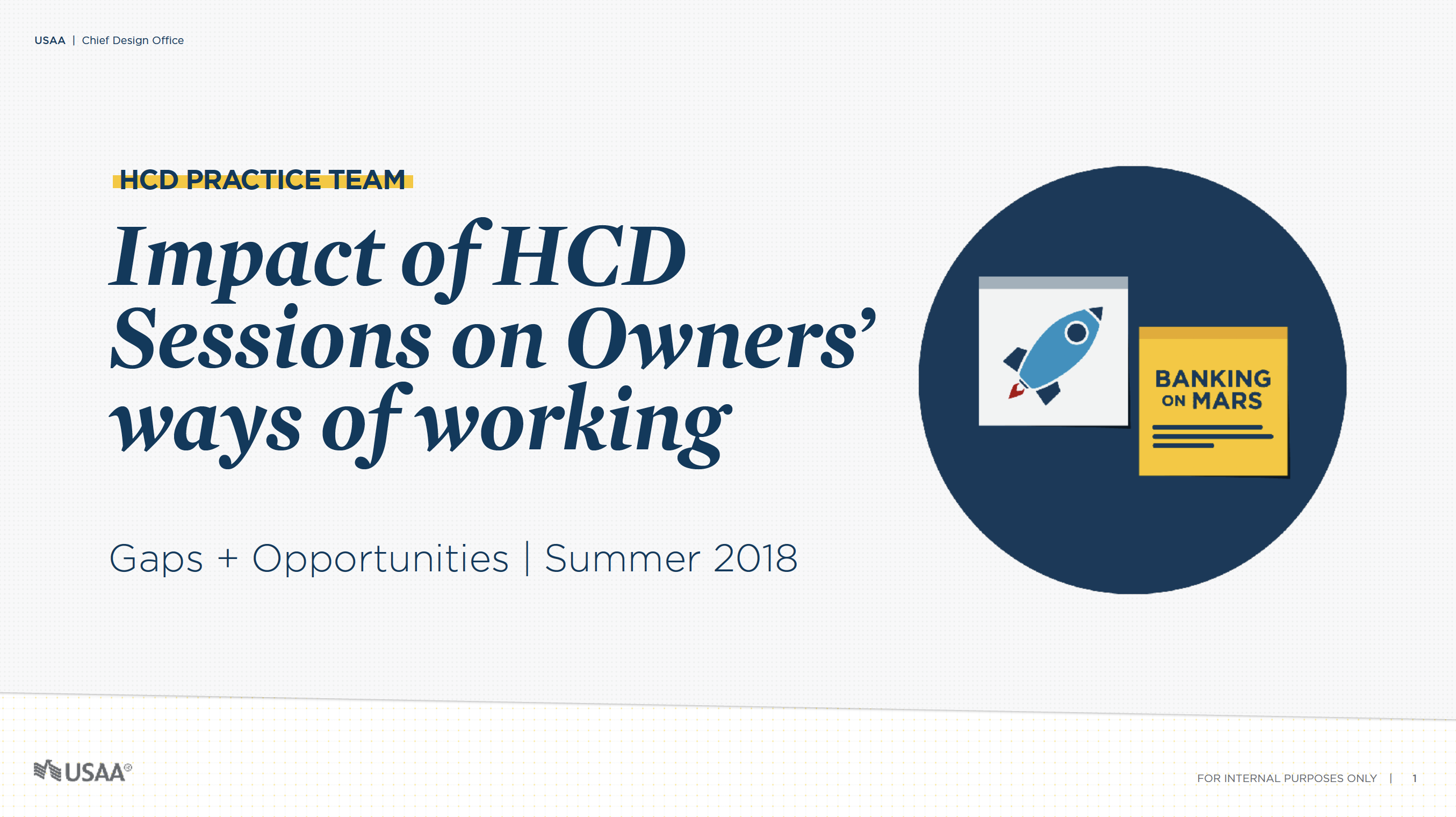


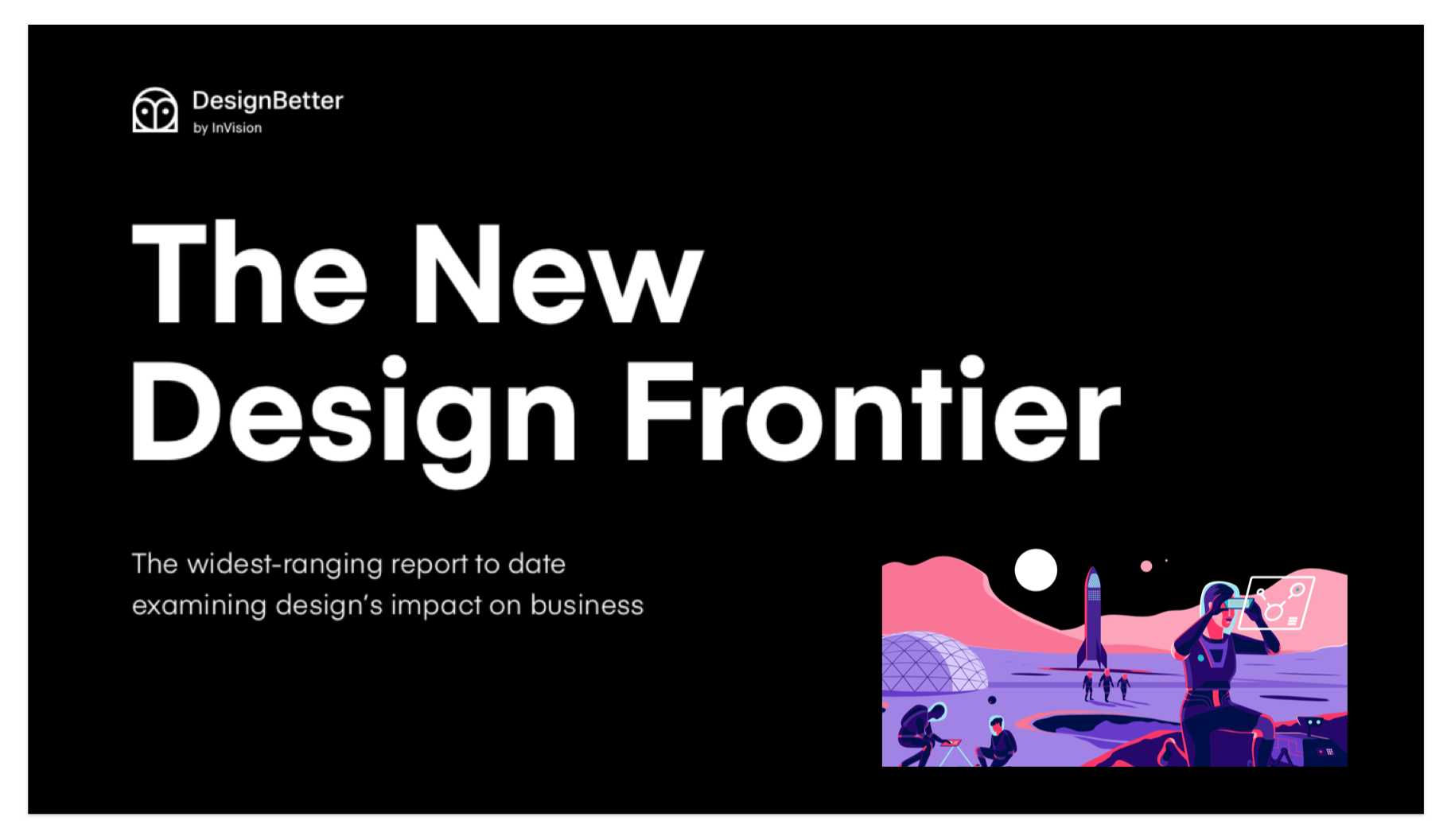
Understanding current customer and business conditions

Design considerations in SAFe | ✏️: Erin Hauber
QUESTIONS LEAVING DISCOVERY:
- How might we ... deepen design’s relationship with their cross-functional team?
- How might we ... get cross-functional teams to practice HCD to solve problems?
- How might we ... demonstrate the connective link between Agile and HCD?
🧠 Ideation
Our team wrote ‘how might we’ questions in discovery and generated 100 ideas before deciding on a direction to explore.
Methods used:
• idea vignettes and prioitization
• provocation cards
• concept refinement
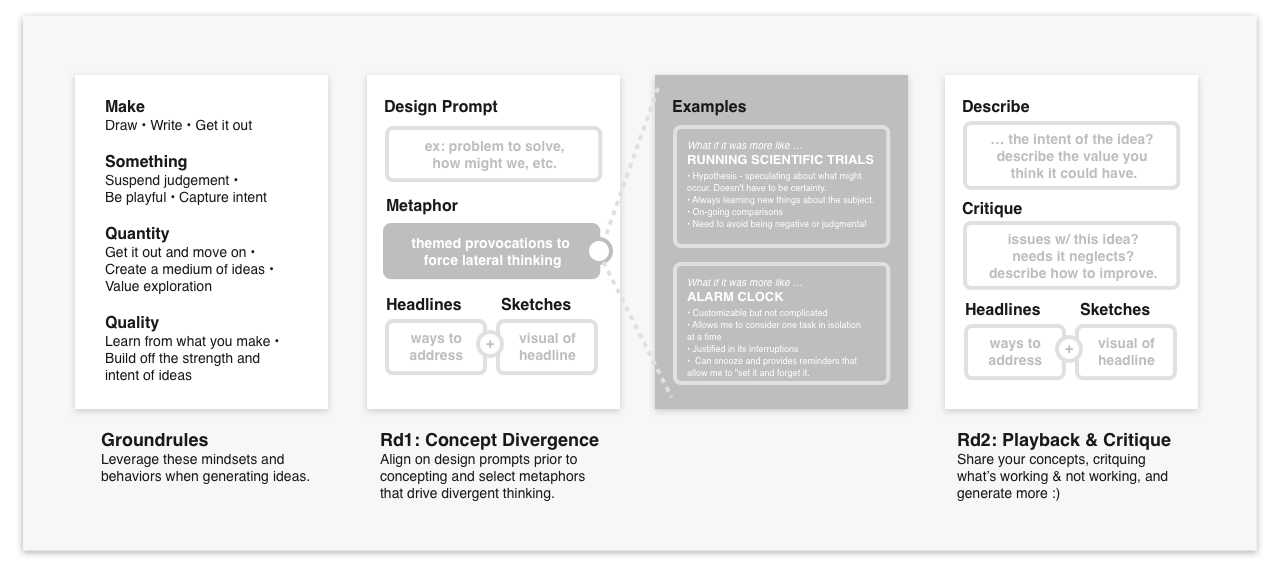
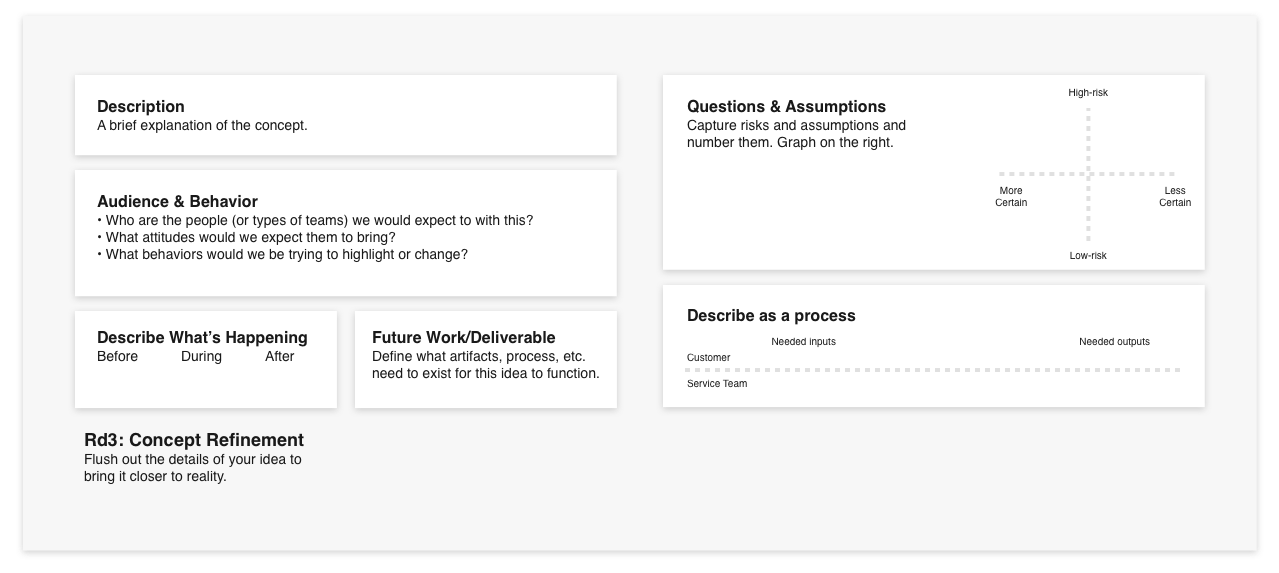
Framework to bridge insights with ideas (🧠: Scott Gerlach)


Individual and group idea generation


 Explored lots of ideas, prioritizing based on human impact
Explored lots of ideas, prioritizing based on human impact
Feedback to gut-check us before evaluative research
Q: What is the value of a team offsite?
A: Offsites are a great opportunity for a team to get out of the daily grind of cranking out work, to look up and out at the work ahead. They should happen at least once a year!
Q: Why create Concept Generation & Refinement framework?
A: An exploratory and analytical framework can help us pursue lots of ideas that are more likely to work for our problem space.
🧪 Evaluative Research
After we received another round of feedback we increased the fidelity of our ideas to test them with target users for the program.
Methods used:
• evaluative research
• concept refinement
🤽🏻♀️ Prototype
We had a clearer winner in the testing of our concepts — team’s biggest pain points were upstream, where alignment occured between partners at the portfolio layer.
Methods used:
• storyboarding
• pilot prototype
• surveys, retrospective

End-to-end was the clear winner


Storyboard
 BYOE Pilot
BYOE Pilot 🚀️ Implementation
After our initial pilot, we received mountains of feedback, and I began working on a strategy to inform how we would execute moving forward.
I tightened our value prop, BYOE provided:
- clearer, more understandable human value
- less design and dev rework
- products more likely to be competitive in the market
Methods used:
• ecosystem map
• experience strategy
• service blueprinting
Defining the Strategy
![]()
![]()
![]()
![]()
![]()
Experience Strategy
![]()
Communicating the value to 5,000+ employees
Executing the Strategy
![]()
Learning HCD by doing HCD design ...
![]()
... on your own work ...
![]()
... and with your cross-functional team
![]()
![]()
Testing with end-users and legal partners
Improving the Program
![]()
![]()
![]() Readiness checks and orientation calls helped teams increase success
Readiness checks and orientation calls helped teams increase success
Pre-Read | Application
![]()
HCD Stories from the Field
![]()
Elevating design teams to be the experts
![]() Deepening design facilitation
Deepening design facilitation
![]()
Creating covertable materials
![]()
The higher design swims within strategy the greater the return.

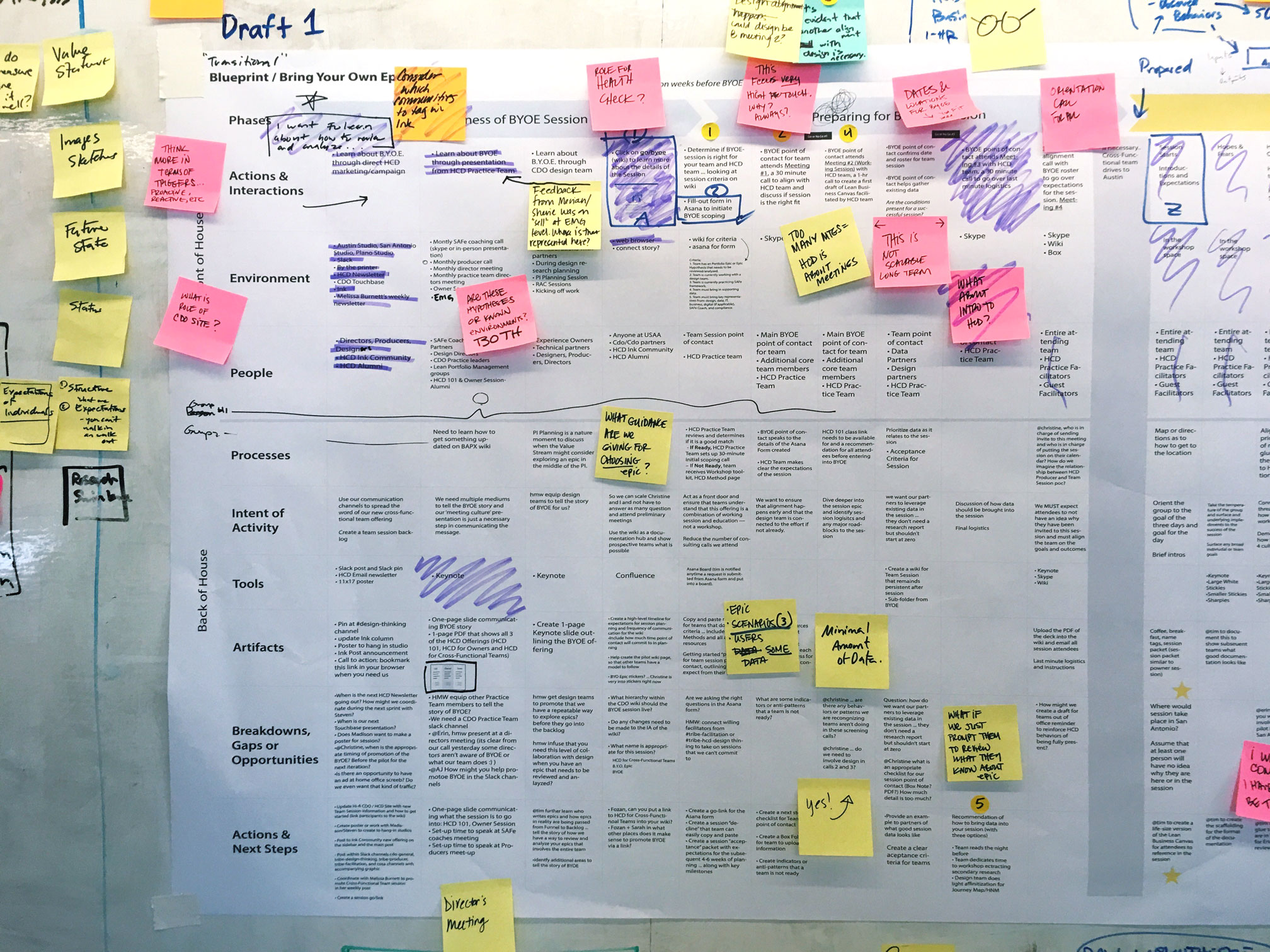

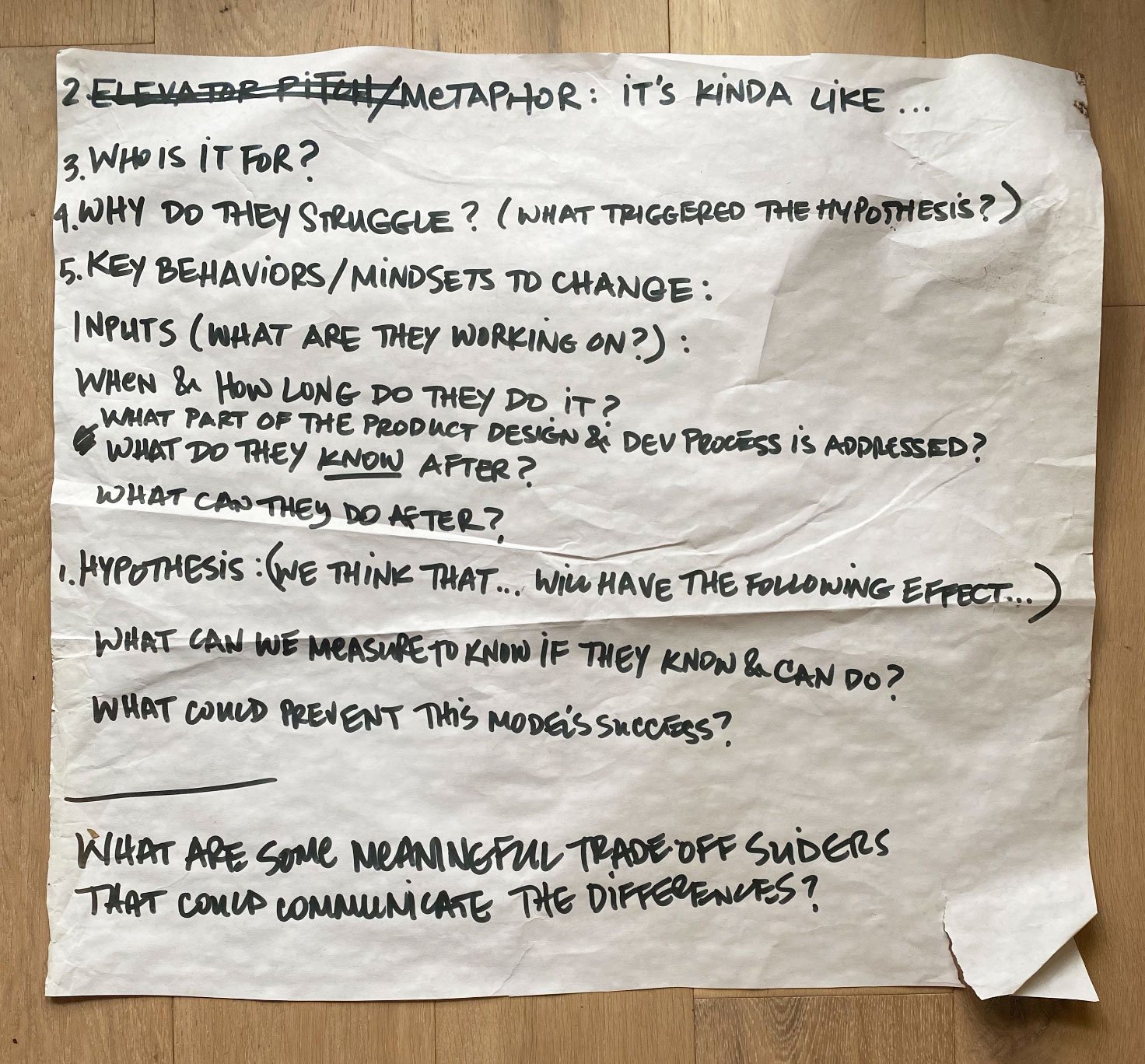

Experience Strategy

Communicating the value to 5,000+ employees
Executing the Strategy

Learning HCD by doing HCD design ...

... on your own work ...

... and with your cross-functional team


Testing with end-users and legal partners
Improving the Program



Pre-Read | Application

HCD Stories from the Field

Elevating design teams to be the experts
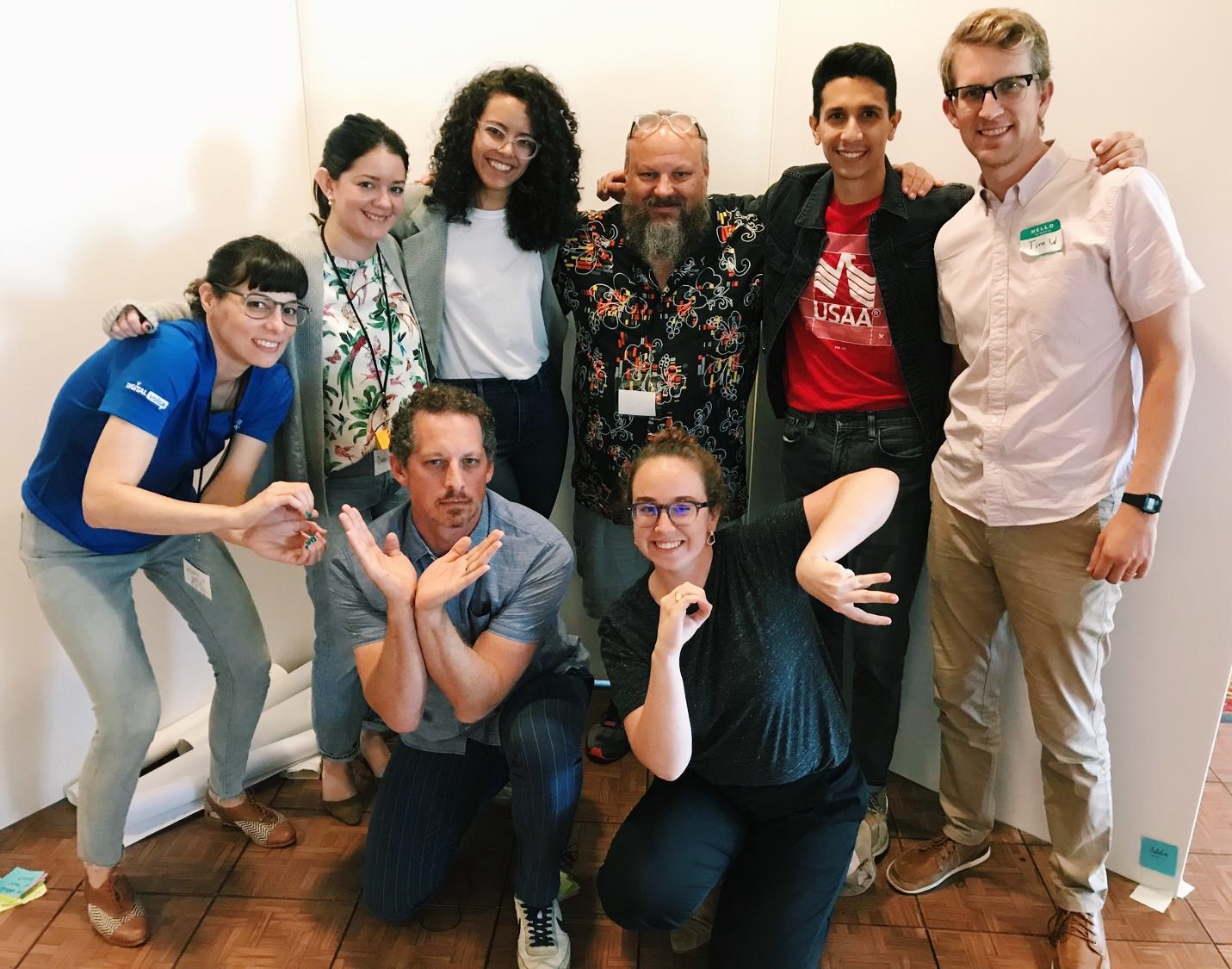 Deepening design facilitation
Deepening design facilitation 
Creating covertable materials

The higher design swims within strategy the greater the return.
MY ROLE:
I was lead designer and product owner of Bring Your Own Epic. I participated in generative research, led concept exploration/testing, built the program curriculum and strategy, developed our marketing funnel, launched our initial pilot, scaled the program across the company and translated to a remote offering during COVID.
KEY LEARNINGS:
- Changing the people of behavior is a wicked problem. People are complicated, have different incentives and don’t always have an appetite to change the way they have always done it.
- Our greatest asset early on was a “tell us why this won’t work” mindset. This allowed our team to surfaced risky assumptions often and while getting buy-in from stakeholders.
- HCD Case Studies, presented by business partners, were a key scaling mechanism. These ‘stories from the field’ told the value of design thinking in a way that our team of experts couldn’t.
Thumbnail illustration by Madison Staires.
